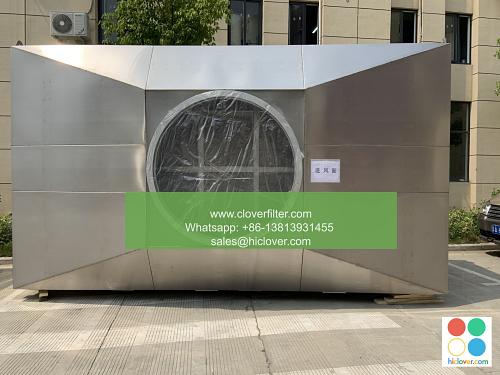Design and Implementation of Automatic Roll Air Filters in Nanotechnology Cleanrooms

Nanotechnology cleanrooms require precise control over the environment to prevent contamination and ensure the quality of the products being manufactured. One of the critical components in maintaining a clean and controlled environment is the air filtration system. In this article, we will discuss the design and implementation of automatic roll air filters in nanotechnology cleanrooms, highlighting their key benefits, technical requirements, and application areas.
Introduction to Nanotechnology Cleanrooms
Nanotechnology cleanrooms are specialized facilities designed to minimize contamination and maintain a controlled environment. These cleanrooms are used for the fabrication and characterization of nanoscale materials and devices, including semiconductors, biomedical devices, and energy storage systems. The cleanroom environment is critical in preventing contamination and ensuring the quality of the products being manufactured.
Importance of Air Filtration in Cleanrooms
Air filtration is a critical component in maintaining a clean and controlled environment in nanotechnology cleanrooms. The air filtration system is designed to remove particulate matter, gases, and vapors from the air, preventing contamination and ensuring the quality of the products being manufactured. Automatic roll air filters are a type of air filtration system that uses a rolling filter media to remove contaminants from the air.
Design Considerations for Automatic Roll Air Filters
The design of automatic roll air filters for nanotechnology cleanrooms requires careful consideration of several technical parameters, including:
* Filter efficiency: The ability of the filter to remove contaminants from the air.
* Flow rate: The rate at which air is filtered through the system.
* Pressure drop: The pressure difference across the filter.
* Filter media: The material used to remove contaminants from the air.
Implementation of Automatic Roll Air Filters
The implementation of automatic roll air filters in nanotechnology cleanrooms involves several key steps, including:
* Site selection: Identifying the location where the air filter will be installed.
* System design: Designing the air filtration system to meet the technical requirements of the cleanroom.
* Installation: Installing the air filtration system and ensuring that it is properly integrated with the cleanroom’s HVAC system.
* Testing and validation: Testing and validating the air filtration system to ensure that it is functioning properly and meeting the cleanroom standards.
Application Areas for Automatic Roll Air Filters
Automatic roll air filters have a wide range of application areas in nanotechnology cleanrooms, including:
* Wafer fabrication: The production of semiconductor wafers requires a high level of cleanliness and control over the environment.
* Biomedical device manufacturing: The production of biomedical devices, such as implantable devices and diagnostic equipment, requires a high level of cleanliness and control over the environment.
* Energy storage system manufacturing: The production of energy storage systems, such as batteries and supercapacitors, requires a high level of cleanliness and control over the environment.
Conclusion
In conclusion, automatic roll air filters are a critical component in maintaining a clean and controlled environment in nanotechnology cleanrooms. The design and implementation of these systems require careful consideration of several technical parameters and key steps. The application areas for automatic roll air filters are diverse and include wafer fabrication, biomedical device manufacturing, and energy storage system manufacturing. By understanding the benefits and technical requirements of automatic roll air filters, manufacturers can ensure the quality of their products and maintain a competitive edge in the global marketplace.

